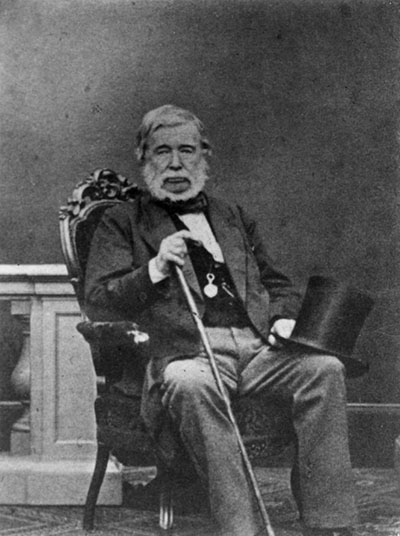The Treaty of Waitangi was signed in Waitangi on 6 February 1840. Signings in the South Island took place in May and June of that year.
Ōnuku signing
On 30 May 1840, two Ngāi Tahu chiefs, Iwikau and John Love (Hone Tikao), signed the Treaty of Waitangi at Ōnuku on Akaroa Harbour. The Akaroa area plays a significant role in Treaty history, as it was European involvement in an 1830 raid on the area by Te Rauparaha that led to British intervention and eventually the development of the Treaty.
HMS Herald’s journey south
The Treaty was brought to the South Island by Major Thomas Bunbury, representing the Governor, Captain William Hobson. He was accompanied by Edward Williams as interpreter. They sailed on the HMS Herald, with Captain Joseph Nias and pilot William Stewart, a one time sealer, whaler and trader.
Major Bunbury had been sent to New Zealand from New South Wales in April 1840 to support Hobson who had suffered a stroke. Edward Williams was the son of Henry Williams, the missionary who was a key figure at the Treaty of Waitangi negotiations and signing.

Arrival at Akaroa
The Herald reached Akaroa on 28 May 1840. A small party of Māori, cautious because of their past experience (in 1830 a European ship the Elizabeth had brought Te Rauparaha and his Ngati Toa raiding party south) greeted them. Williams read and explained the Treaty and two days later, after further explanations, the signing took place.
Further visits in the South Island
Following the Akaroa signing, Bunbury and Williams continued south to collect more signatures. On 10 June, the leading chief Tuhawaiki and two other chiefs Kaikoura and Taiaroa, signed the Treaty at Ruapuke Island, near Stewart Island. This Taiaroa was not the famous chief Matenga Taiaroa, who never signed the Treaty. Bunbury and Williams then sailed north with further signings on 13 June at the entrance to Otago Harbour and on 17 June at Cloudy Bay. In a separate voyage, Henry Williams had negotiated signings in Queen Charlotte Sound on 4 May and Rangitoto Island (off the Marlborough Sounds) on 11 May.
A modern chapter in the treaty story
In 1998 Prime Minister Jenny Shipley came to Ōnuku Marae and presented the Crown Apology to Ngāi Tahu - the final stage in the settlement of Te Kerēme (the Ngāi Tahu Land Claim).
Recommended resources
- The Treaty of Waitangi Claudia Orange
- Ngāi Tahu accession to the Treaty from the The Ngāi Tahu Report 1991 to the Waitangi Tribunal p.215 [3.9MB PDF]
- The long dispute: Māori land rights and European colonisation in Southern New Zealand Harry C. Evison
- Read more about Ōnuku Marae and Takapūneke from Tī Kōuka Whenua
- Books by Ngāi Tahu author Te Maire Tau
Next page: The meaning of the Treaty
